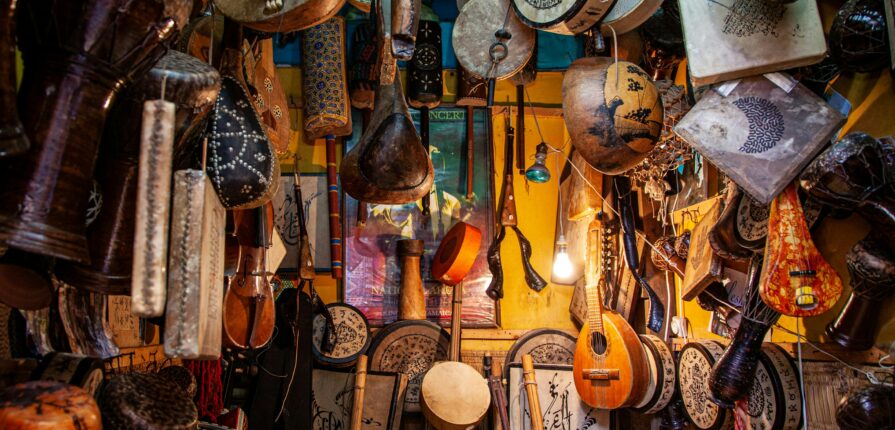Explore eight fascinating musical instruments from around the world that highlight the amazing diversity of music! From the eerie Theremin invented in Russia in 1920 to the rhythmic Didgeridoo from Australia, each instrument reflects unique cultural traditions. Whether it’s the melodic Hangul from Korea or the vibrant Gamelan ensemble from Indonesia, these instruments offer a glimpse into rich musical heritages.
Embrace diversity, explore new musical horizons, and let these lesser-known instruments inspire your musical journey!
-Wednesday, July 3rd
1.Hang Drum (Switzerland):
Originating in Switzerland in the early 2000s, the Hang Drum (or simply Hang) is a melodic percussion instrument with a distinctive UFO-like shape. Its soothing tones and resonant sound have made it popular in contemporary music genres like ambient and world music
2. Theremin (Russia)
Invented by Russian physicist Leon Theremin in 1920, the Theremin is an electronic instrument played without physical contact. It uses electromagnetic fields to generate eerie, ethereal sounds, making it a favorite in sci-fi movie soundtracks and avant-garde music.
3. Didgeridoo (Australia)
The Didgeridoo is a wind instrument traditionally crafted by Aboriginal Australians from hollow out tree trunks. Its deep, resonant drone and rhythmic playing style are integral to Aboriginal culture, often used in ceremonial rituals and contemporary music.
4. Hangul (Korea)
Originating in Korea, the Hangul is a traditional zither-like instrument with movable bridges, allowing players to adjust the tuning and create a range of melodic patterns. It has a gentle, melodious tone that complements Korean folk music beautifully.
5. Gamelan (Indonesia)
The Gamelan ensemble from Indonesia consists of a variety of percussion instruments, including metallophones, xylophones, drums, and gongs. Played in intricate patterns and syncopated rhythms, Gamelan music is deeply rooted in Indonesian cultural and religious traditions
6. Balalaika (Russia)
The Balalaika is a triangular-bodied string instrument from Russia, known for its distinctive triangular body and three strings. It produces bright, lively tones and is used in traditional Russian folk music, often accompanied by dance
7. Hang Drum (Caribbean)
Originating in the Caribbean, the Hang Drum is a percussion instrument made from a steel drum. Its unique sound and rhythmic patterns are integral to Caribbean music genres like Calypso and Soca, adding a vibrant and melodic dimension to the music
8. Sitar (India)
The Sitar is a plucked string instrument from India, featuring a long neck and a resonating gourd body. It has a rich, intricate sound characterized by its sympathetic strings and intricate fretwork. The Sitar is prominent in classical Indian music and has influenced Western artists like The Beatles.
Embrace Musical Diversity These eight instruments represent just a glimpse into the vast world of musical diversity. Each instrument not only produces distinct sounds but also carries cultural significance, reflecting the creativity and ingenuity of its creators. Whether you’re drawn to the haunting melodies of the Theremin or the rhythmic complexity of the Gamelan, exploring these instruments opens doors to new sonic landscapes and enriches our appreciation for global musical traditions. Next time you listen to music or attend a concert, keep an ear out for these lesser-known instruments.
Their unique sounds and cultural histories add depth and richness to the global tapestry of music. Embrace diversity, explore new musical horizons, and let these instruments inspire your own musical journey.


